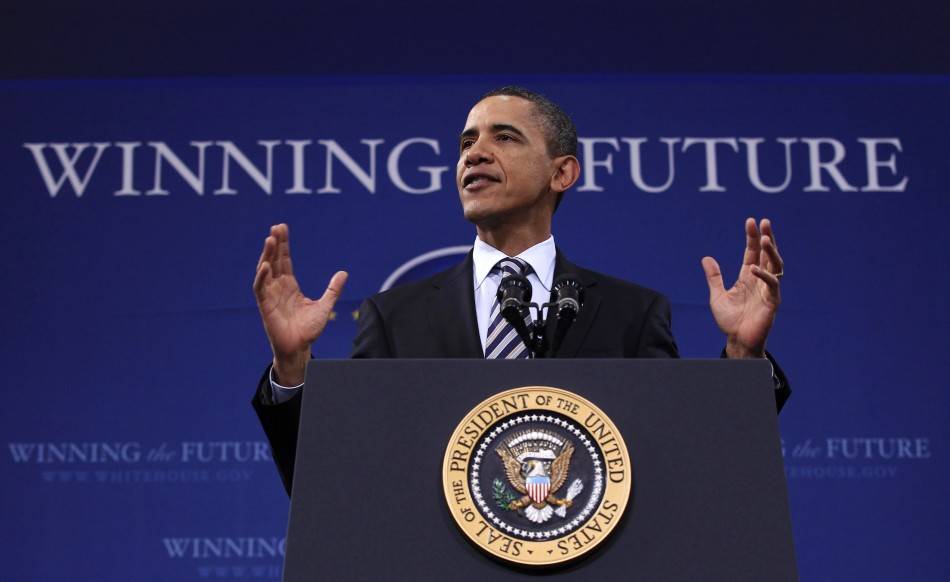
At the 2011 state of the union, Obama began to hint at his plan to “win the future”, which is being called the Wireless Innovations Infrastructure Initiative. Revealing his plan in more detail at Northern Michigan University on February 10th, the president’s aim is to build out the nation’s high-speed wireless network.
What is it? The plan has three main goals:
-
Expand “4G” wireless coverage to 98% of Americans within the next 5 years
-
Reduce the US deficit by nearly $10 billion over the next decade through the sale of 500MHz of federal wireless spectrum, doubling the amount of spectrum available for mobile broadband
-
Invest in the nationwide public safety network for increased efficiency and security
In a White House White Board video released on February 11th, Austan Goolsbee, the chairman of the Council of Economic Advisers, explains how this plan will accomplish the goals laid out above. Investment incentives will encourage the private sector to build the network out on its own, and $3 billion of the proceeds of the spectrum auction will go to the Wireless Innovation Fund, providing seed money to fund scientists who will find ways to make our network “faster, more secure, and a better business platform”. In addition, there will be a one-time investment of $5 billion that the FCC will use to reform the Universal Service Fund.
According to Goolsbee, the US isn’t in the top 5 countries with the fastest and widest 3G coverage, so the Obama Administration wants to concentrate on upgrading to 4G coverage for 98% of Americans.
I have a few problems with this:
What does 4G even mean?
Chiehyu Li and James Losey wrote an excellent op-ed recently about 3G, 4G, and the speeds of America’s wireless networks. In it, they explain that the ITU (International Telecommunications Union) has set LTE Advanced as the standard 4G technology. This isn’t expected to be deployed in the US until 2012 at the earliest. The article goes on to explain that current technologies being used in America would better be defined as 3.5G.
This leads me to think that just because you can call it 4G, doesn’t mean it is 4G, especially when the wireless speeds in other countries using 4G are so much faster. The following table shows comparisons provided in the article.
-
Low
High
Nordic and Baltic Region
20mbps
80mbps
Germany
7mbps
50mbps
Japan
(no data given)
37mbps
Taiwan
(no data given)
16mbps
United States
3mbps
12mbps
Another flaw in the discourse of 4G vs. 3G is that whether or not a certain type of technology is being used does not always mean that the speed will be maximized. Especially in the US, technologies are capable of offering higher speeds, but services don’t always provide the speeds that their equipment is capable of handling.
Why are mobile devices touted as the answer to the digital divide?
Goolsbee points out that by 2010 there had been 12 billion apps downloaded. Sure, that’s a lot of apps, but he seems to think that dominating the mobile apps market is the key to “winning the future”. I have to disagree. Though mobile devices are handy and apps provide us with many useful and fun services, I find it to be an incredible cop-out to try to pass mobile devices as a sufficient alternative to desktop and laptop computers.
When is the last time anyone wrote a paper, article, or blog entry on his or her mobile device? Or created a resume? Or applied for a job? Without a keyboard, a reasonably sized screen, or the ability to multitask, mobile devices have limitations that make fully equipped computers necessary for many work-related tasks.
Is wireless really any cheaper than fixed-line internet?
One of the main arguments behind this plan is that wireless internet fuels mobile connectivity, which they frame as universally accessible. The main flaw in this argument is that there are several expenses involved in gaining access to a data plan for a mobile device. You need to buy a device, which can range from a couple hundred to $50,000. Just last year it cost $700 for a 32 GB iPhone 3GS without a contract. Currently, with a contract, the iPhone 4 is $300. If you’re starting a new contract, your chances of getting an Android phone for free or less than $100 increase dramatically, but if you do not want to change carriers or start a new contract, your options start to dwindle.
Of course, in order to have service on your smartphone, you’ll need a contract with a wireless service provider. Let’s take the iPhone on the Verizon network as an example. The monthly bill will include not only your data package ($30-50/month), but also your messaging plan ($5-20/month) and voice plan ($40-70/month). And you can’t forget the $35 activation fee!
As a comparison, T-Mobile offers an Android phone for free after discounts with a new contract, but their plans range from $40/month for just 500 minutes and no messaging or data to $100/month for unlimited voice, text and data.
———-
Laura works for Volo Broadband.








